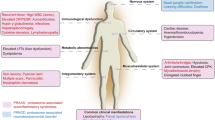Abstract
Wiskott-Aldrich syndrome (WAS) is an X-linked recessive immunodeficiency disease associated with eczema, hemorrhagic episodes, and recurrent severe infections. The N-terminus of the cytoplasmic WAS protein (WASP) has similarity to WH1 domains, which recognize proline-rich sequences and direct protein localization and formation of multicomponent assemblies. About one-half of the WAS-causing mutations affect the WH1 domain, but this forms only about one-fifth of the length of the protein. To understand the structural and functional effects of WAS-causing mutations within the WH1 domain, the three-dimensional model of the WASP WH1 domain was constructed based on the crystal structures of the Mena and Evl EVH1 (WH1) domains. Based on the model, the protein structural effects of the mutations were evaluated and putative ligand-binding regions identified. Mutations in the WASP WH1 domain were found to influence both the function and structure of the WASP. The amino acid substitutions cause general and local structural changes because of steric clashes and changes to the positions of adjacent strands and the fold of the protein. Some mutations alter the electrostatics and interactions with partners and other domains of WASP.
Similar content being viewed by others
Author information
Authors and Affiliations
Additional information
Electronic Publication
Rights and permissions
About this article
Cite this article
Rong, SB., Vihinen, M. Structural basis of Wiskott-Aldrich syndrome causing mutations in the WH1 domain. J Mol Med 78, 530–537 (2000). https://doi.org/10.1007/s001090000136
Received:
Accepted:
Published:
Issue Date:
DOI: https://doi.org/10.1007/s001090000136




